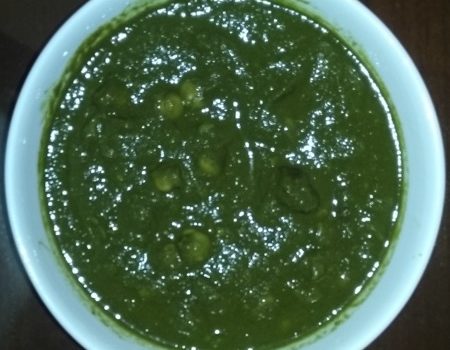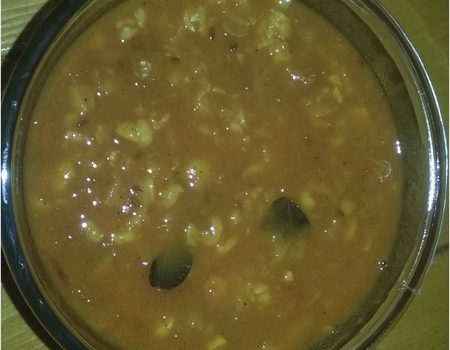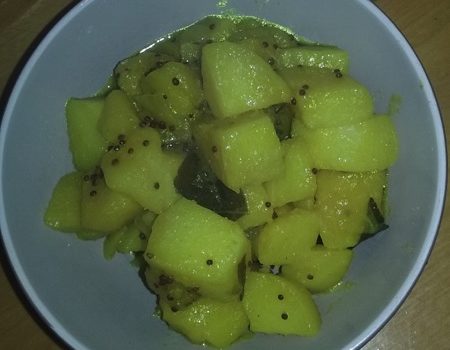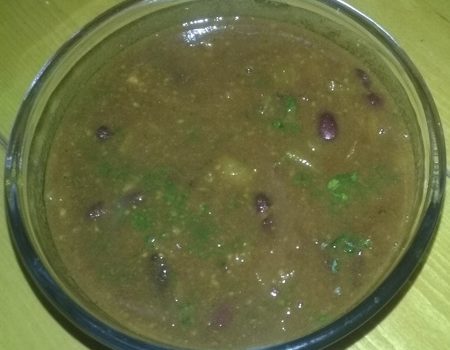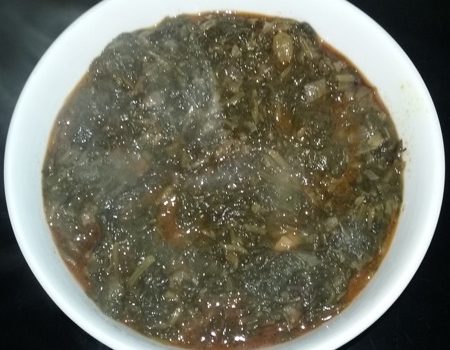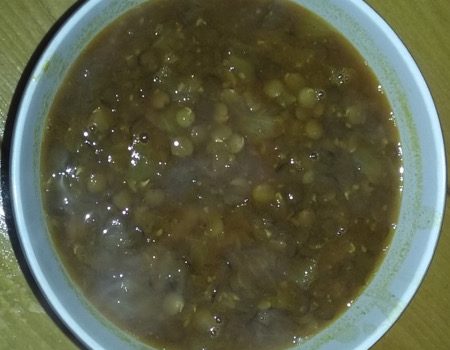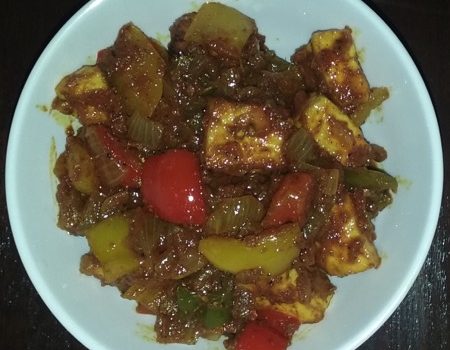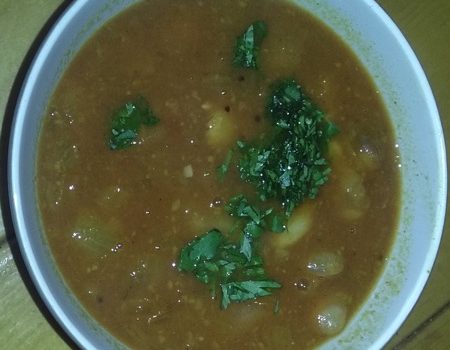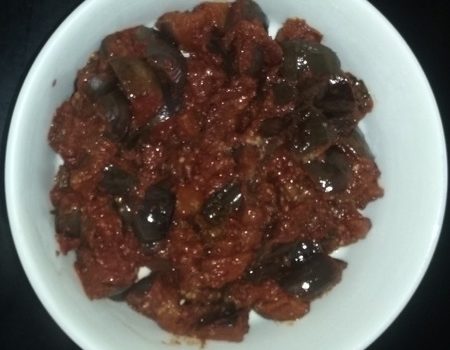I was skeptical of this combination, but I am a complete convert to it now. The only thing I do differently is I blanch the spinach in boiling water for a few minutes and then puree it and add it to the cooked chana. This gives the dish more body and a smoother texture.
Taken from : https://www.vegrecipesofindia.com/palak-chole-recipe-palak-chole/
Course : Side dish
Cuisine : Indian, Punjabi
Preparation Time : 8 minutes
Cook Time : 45 minutes
Total Time : 53 minutes
Serves : 4
Ingredients :
Main ingredients for Palak Chole:
4.5 or 5 cups chopped spinach or palak
1 cup dried white chickpeas (whole or Kabul chana or safe chana)
1 large tomato -pureed
1.5 to 2 cups water
3 to 4 tablespoon oil
3/4 teaspoon pomegranate seed – dry roasted and crushed or 1/2 to 3/4 teaspoon dry mango powder (amchur powder)
1 teaspoon kauri methi – crushed (dry fenugreek leaves)
Salt as require – for boiling cholesterol and for the gravy
To be ground to paste :
1 large onion, roughly chopped
1 or 2 green chillies (Hari mirchi), chopped
3 to 4 garlic cloves (garlic), chopped
1/2 inch ginger (adrak), chopped, optional
Whole spices for palak chana :
1 inch cinnamon (dalchini)
3 cloves (lavang)
2 green cardamom (hari elaichi or choti elaichi)
1 black cardamom (badi elaichi)
1 tej pasta (Indian bay leaf)
Spice powders for palak chole :
1/2 teaspoon cumin powder (jeera powder)
1 teaspoon coriander powder (dhania powder)
1/2 teaspoon red chilli powder (lal mirch powder)
1/2 teaspoon turmeric powder (haldi powder)
3/4 teaspoon punjabi garam masala powder or chana masala powder or garam masala powder
Method :
Preparation for palak chole recipe:
1. Soak the dried white chana (whole) overnight or for 7 to 8 hours.
2. Drain and add whole (chickpeas) with 3 to 4 cups of water in the pressure cooker, sprinkle 1/4 teaspoon salt or as required.
3. Pressure cook the whole till they are cooked completely, you can also cook the chickpeas in a pot or pan.
4. Meanwhile, prepare the onions paste with green chillies, ginger and garlic, also prepare the tomato puree. Keep aside.
5. Rinse palak (spinach leaves) very well in water, then chop them. Also drain the cooked whole and keep aside.
Making palak whole recipe :
1. In a pan heat oil. Fry all whole spices till fragrant.
2. Add the onion paste. Saute till light brown.
3. Add the tomato puree and all the spice powders mentioned in the above list.
4. Fry till oil leaves the sides of the masala and the masala is well browned.
5. Now add the chopped palak and salt. Stir and saute for 4 to 5 minutes.
6. Add the cooked chole and stir. Pour 1.5 to 2 cups water.
7. Add crushed pomegranate seeds powder or dry mango powder.
8. Also mash a few chole with the back of the spoon. Simmer till the palak chole gravy thickens and becomes smooth.
9. Lastly add crushed kasuri methi and simmer for 1 to 2 minutes.
10. Serve palak whole hot with rotis, naan or steamed rice or jeera rice and onion-lemon salad.
